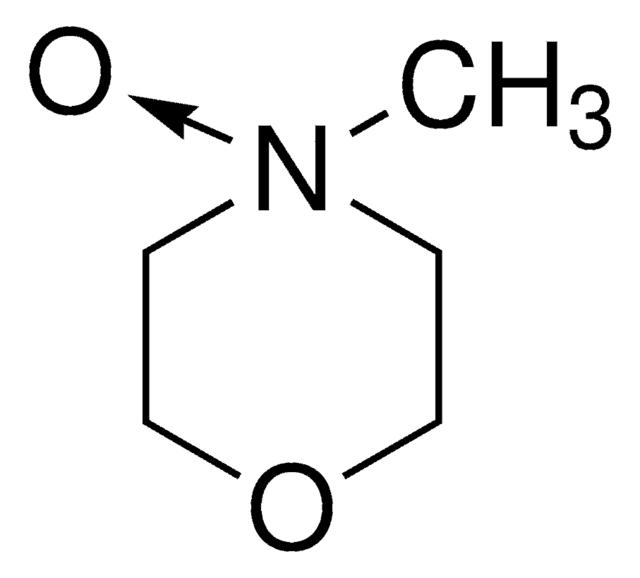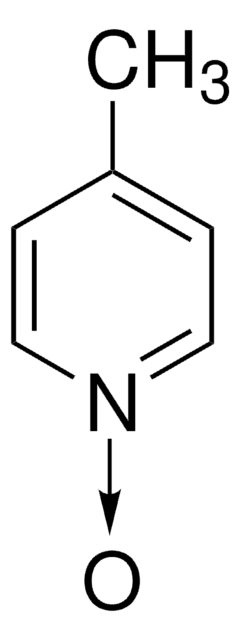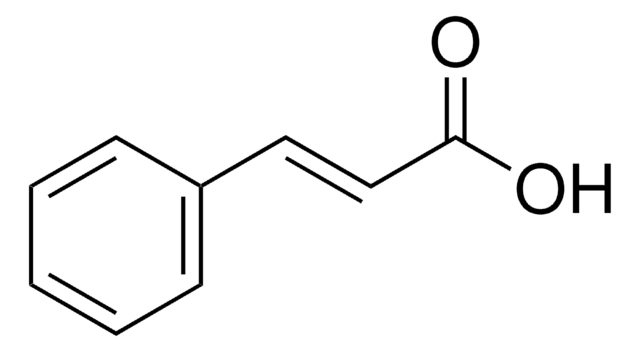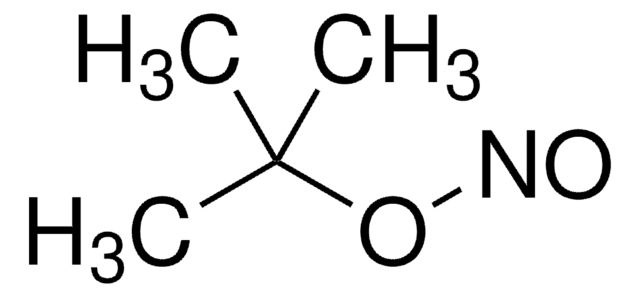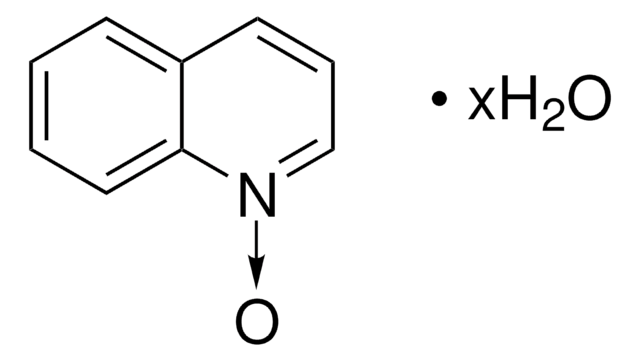142352
4-Cyanopyridine N-oxide
96%
Synonym(s):
Isonicotinonitrile 1-oxide
Sign Into View Organizational & Contract Pricing
All Photos(1)
About This Item
Empirical Formula (Hill Notation):
C6H4N2O
CAS Number:
Molecular Weight:
120.11
EC Number:
MDL number:
UNSPSC Code:
12352100
PubChem Substance ID:
NACRES:
NA.22
Recommended Products
Assay
96%
form
solid
mp
223-225 °C (lit.)
solubility
1 M NH4OH: soluble 5 mg/mL, clear, colorless (methanol)
functional group
nitrile
SMILES string
[O-][n+]1ccc(cc1)C#N
InChI
1S/C6H4N2O/c7-5-6-1-3-8(9)4-2-6/h1-4H
InChI key
QNCSFBSIWVBTHE-UHFFFAOYSA-N
Signal Word
Warning
Hazard Statements
Precautionary Statements
Hazard Classifications
Acute Tox. 4 Dermal - Acute Tox. 4 Inhalation - Acute Tox. 4 Oral - Eye Irrit. 2 - Skin Irrit. 2 - STOT SE 3
Target Organs
Respiratory system
Storage Class Code
11 - Combustible Solids
WGK
WGK 3
Flash Point(F)
Not applicable
Flash Point(C)
Not applicable
Personal Protective Equipment
dust mask type N95 (US), Eyeshields, Gloves
Choose from one of the most recent versions:
Already Own This Product?
Find documentation for the products that you have recently purchased in the Document Library.
Zhao Xiang Yu et al.
Acta crystallographica. Section C, Crystal structure communications, 60(Pt 4), m194-m196 (2004-04-09)
The intermediate [Cd(4-PTZ)(2)(H(2)O)(4)] [4-PTZ is 5-(4-pyridyl N-oxide)tetrazolate, C(6)H(4)N(5)O], (I), in the synthesis of 4-HPTZ, (II), from the cycloaddition reaction of 4-cyanopyridine N-oxide with NaN(3) in water using CdCl(2) as catalyst, was structurally characterized. The unique Cd atom lies on a
Construction of Two Coordination Complexes Based on 5-(4-Pyridine N-oxide) Tetrazole (4-ptz) Generated by an in-situ [2+ 3] Cycloaddition Reaction.
Xiang J, et al.
Zeitschrift fur Anorganische und Allgemeine Chemie, 639(3-4), 563-568 (2013)
Carl M Blumenfeld et al.
Chemphyschem : a European journal of chemical physics and physical chemistry, 18(9), 1091-1100 (2017-01-18)
Globally scalable sunlight-driven devices that convert solar energy into storable fuels will require efficient light absorbers that are made of non-precious elements. Suitable photoanode materials are yet to be discovered. Here we utilised the timesaving nature of pulsed-laser-in-liquids synthesis and
Our team of scientists has experience in all areas of research including Life Science, Material Science, Chemical Synthesis, Chromatography, Analytical and many others.
Contact Technical Service
